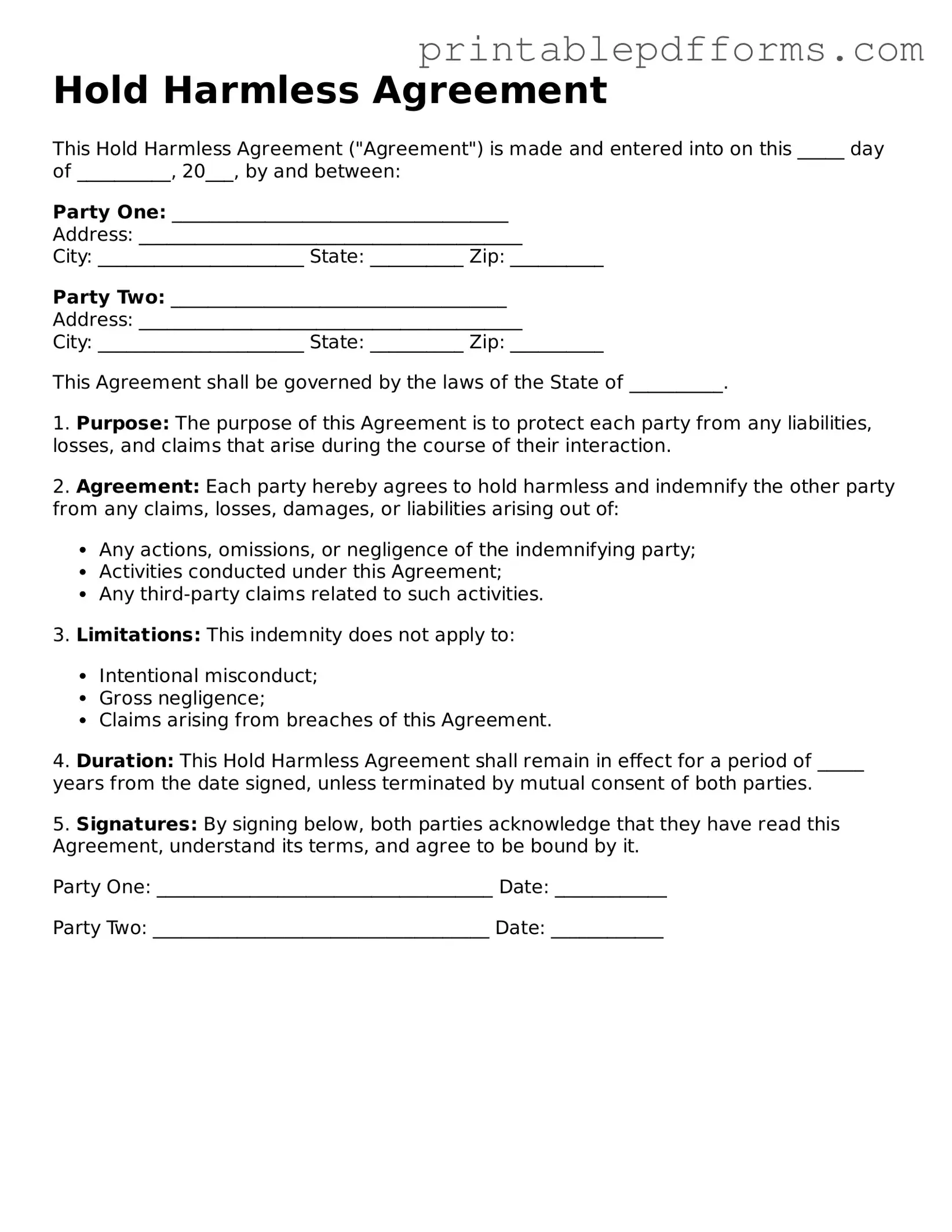Hold Harmless Agreement
This Hold Harmless Agreement ("Agreement") is made and entered into on this _____ day of __________, 20___, by and between:
Party One: ____________________________________
Address: _________________________________________
City: ______________________ State: __________ Zip: __________
Party Two: ____________________________________
Address: _________________________________________
City: ______________________ State: __________ Zip: __________
This Agreement shall be governed by the laws of the State of __________.
1. Purpose: The purpose of this Agreement is to protect each party from any liabilities, losses, and claims that arise during the course of their interaction.
2. Agreement: Each party hereby agrees to hold harmless and indemnify the other party from any claims, losses, damages, or liabilities arising out of:
- Any actions, omissions, or negligence of the indemnifying party;
- Activities conducted under this Agreement;
- Any third-party claims related to such activities.
3. Limitations: This indemnity does not apply to:
- Intentional misconduct;
- Gross negligence;
- Claims arising from breaches of this Agreement.
4. Duration: This Hold Harmless Agreement shall remain in effect for a period of _____ years from the date signed, unless terminated by mutual consent of both parties.
5. Signatures: By signing below, both parties acknowledge that they have read this Agreement, understand its terms, and agree to be bound by it.
Party One: ____________________________________ Date: ____________
Party Two: ____________________________________ Date: ____________
